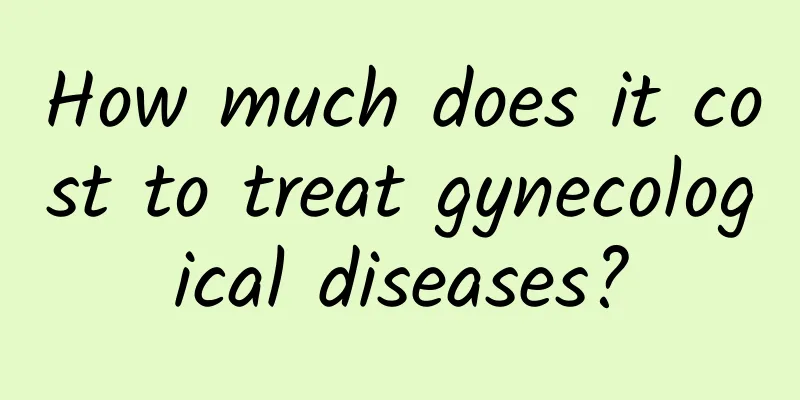How are ovarian cysts formed? What are the main symptoms?

|
How are ovarian cysts formed and what are the main symptoms? Causes of ovarian cysts: 1. Long-term dietary structure: Poor living habits, excessive psychological pressure and other factors lead to excessive acidification of the body and a decline in the overall function of the human body, leading to kidney deficiency, liver-kidney homology, and pathological deficiency of kidney and ovarian cysts, which in turn leads to a slowdown in the metabolic cycle of the lower abdomen, ovarian diseases and endocrine disorders, and a decline in immune function, which develops into abnormal proliferation of ovarian tissue and ultimately leads to ovarian cysts and even cancer. 2. Environmental factors: unreasonable dietary structure, high cholesterol diet, vitamin A, C, E deficiency, smoking, ionizing radiation and other environmental factors. 3. Endocrine factors: The incidence rate increases in non-pregnant women or women who are not pregnant. Pregnancy seems to have a protective effect on ovarian cancer. Menarche before the age of 12, menopause after the age of 50, frequent menstruation, use for more than 3 cycles should be discussed with a doctor, and precocious puberty or virilization are also related to the occurrence of ovarian cysts. The main symptoms of ovarian cysts are: ① Menstrual disorders: mainly amenorrhea, most of which are secondary amenorrhea. Before amenorrhea, there is often infrequent or too little menstruation, and occasionally frequent or excessive menstruation. ② Infertility: Infertility is often caused by menstrual disorders and anovulation. Menstrual disorders and infertility are often the main reasons for treatment. ③ Hirsutism and obesity: Due to excessive secretion of androgen in the body, it may be accompanied by hirsutism and obesity. The hair distribution tends to be masculine. The hirsutism phenomenon often does not attract the attention of patients and is only discovered during physical examinations. ④ Bilateral ovarian enlargement: In a few patients, gynecological examination can reveal that the ovaries are 1 to 3 times larger than normal and have toughness. Most patients need auxiliary examinations for ovarian enlargement, such as B clinical examination and ultrasound findings. |
<<: What are the symptoms of pelvic inflammatory disease and how to prevent and treat it
>>: What is the cause of the left ovarian cyst and how to treat it
Recommend
Drinking juice to prevent drowsiness, "this 1 trick" is a smart way to solve it! Nutritionist Yang Zhexiong: 3 tips for healthy juice drinking
In summer, a glass of cool, sweet and delicious f...
Obvious abdominal pain after abortion should not be underestimated
If a woman has mild lower abdominal pain on the d...
How to prevent endometrial thickening?
As a woman, we are easily attacked by many diseas...
Aya Ueto uses cabbage to lose weight and Aya Hirayama eats vegetables to supplement milk
In the concept of weight loss, it is not recommen...
Can uterine fibroids be cured?
Can uterine fibroids be cured? Uterine fibroids a...
Does curettage mean that the cure rate of medical abortion is low?
Nowadays, many young women do not pay attention t...
Causes of cervical hypertrophy
Cervical hypertrophy is a pathological type of ch...
What causes white spots on the vulva during menopause? What causes white discharge from the lower body during menopause?
Menopause is an important transition period for w...
Dietary precautions after painless abortion
As the phenomenon of unwanted pregnancies increas...
The most effective treatment for cervical erosion
Cervical erosion seriously affects women's he...
Intermittent fasting is very popular, is it suitable for me? Experts: The benefits are certain, here are 5 tips to know before proceeding
● Even if you eat less, if you distribute it even...
Medicinal wine = nourishing the body? The key to health is to move more
People actually live in a limited temperature ran...
Experts analyze the causes of acute pelvic inflammatory disease
The cause of acute pelvic inflammatory disease is...
Learn more about the causes of vaginitis
There are many factors in our lives that cause va...
Why can’t I lose weight? It turns out that eating these things messes up hormones
The reason why you can’t lose weight may be that ...









